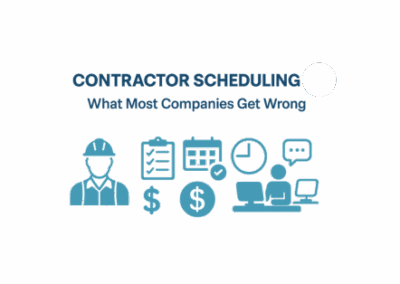Most people have faced workplace conflict at least once in their lives. In both professional and personal realms, encountering such situations is undesirable for anyone. However, inevitabilities arise because of the inherent differences in thoughts and actions among individuals.
Despite its perceived certainty, it’s essential that organizations have preparations in place to prevent or deal with workplace conflict when it arises. The wide scope of problems that can emerge at any given time can leave managers in an uncomfortable situation.
“How can we resolve it?!”
You can’t prepare for the unknown. But you can adopt a specific approach. This approach needs to ensure that if workplace conflict does arise, you’re well-equipped to deal with it.
Let’s first define workplace conflict and the different ways it can affect organizations.
What is Workplace Conflict?
Workplace conflict is a result of sharp disagreement or opposition of interests and ideas. It can often cause a decrease in productivity and cause difficulty in retaining employees.
A Workplace Conflict Report from CPP Global stated that 85% of employees experience some kind of conflict. With 29% of employees constantly experiencing conflict. This equates to costing the U.S. $389 billion in paid hours annually.
Organizations can ill-afford to lose thousands of dollars over inefficient processes, leading to workplace conflict. They need a strategy. A strategy that will help to measure and control it. To begin, they should fully educate themselves on the different types of workplace conflict and the ways they can surface.
We’ve listed a few:
- Leadership conflicts – It’s not just employees, you know. Managers and their leadership styles can often be at the center of controversy.
- Creative conflicts – Different employee ideas can often cause contrasting opinions, leading to workplace conflict.
- Work style conflicts – Maybe they like working alone. Or maybe in groups. Employees varying in work styles can cause conflict when working together.
- Personality conflicts – We won’t get on with everyone we meet. So, there’s a chance that employees with contrasting personalities may clash.
- Task-based conflicts – A lack of coordination, communication, or an individual delaying a task from progressing. All these can contribute to the cause of workforce conflict.
These conflict types can derive from a range of different situations. Maybe a leadership style is too authoritative for a laid-back workforce. Or maybe two employees disagreed on how best to complete a task.
Such scenarios can create an unwanted and unnecessary clash. But it’s not all bad news. Every so often, these scenarios prove to be a blessing.
Surprising Benefits of Workplace Conflict
Surprisingly, workplace conflict can have its benefits. Better Health specified two different types of conflict that can emerge in your workplace.
The first is when people’s ideas, decisions, or actions for a job are in opposition. The second is when two people just don’t get along. It is more commonly known as a ‘personality clash”.
Many believe that a conflict of ideas can often boost productivity. Parties involved can prevent workplace conflict by collaborating to create a solution. This method can catalyze the recognition of positive changes that may otherwise go unnoticed. On the flip side, two people who strongly dislike each other may let their egos take over.
More often than not, workplace conflict results in negative repercussions. So, let’s look at the best ways organizations can resolve it.
How to Resolve Workplace Conflicts
Intervene at the earliest.
Resolving workplace conflict as soon as possible minimizes the prolonged risk of employee disagreement. Significantly, it dramatically impacts the time it can affect an organization’s productivity, too. A simple, transparent discussion can be enough to set the record straight.
According to a new survey, 32.5% believe miscommunication comes from supervisors and managers. Miscommunication can lead to misunderstanding and misinterpretation. Don’t allow that feeling of uncertainty to linger. A manager should always act at the earliest possible time.
Improve communication
Effective communication is the key to resolving any workplace conflict. It is the most potent tool for mitigating and addressing issues within the professional setting. Identifying communication tools is essential for an organization searching for an optimized workforce.
Take proactive steps to address the unmet needs of employees. This ensures that their concerns and requirements are met to foster a more supportive and fulfilling work environment.
One form of communication that we know all too well is the employee scheduling process. Integrating employee scheduling software can help to reduce scheduling and general workplace conflicts. As an employee, not getting the schedule you desire can be hard-hitting.
Your work-life balance is spiraling out of control, and you only have your manager to blame for it. So, what now?
Conflict between managers and employees should never exist. But for those who haven’t detected the best software, employee scheduling conflicts continue to happen. Preferential treatment, accidental double-bookings, or a lack of direct communication. We know them all.
Luckily for managers, integrating a best-of-breed employee scheduling software will reduce those human errors and optimize your scheduling process. You’ll be surprised by the reduction in workplace conflict, too.
Take Action When Needed
Despite discussing how leadership can often be the root cause of workplace conflict, it can also be a problem solver. Effective leadership comes from a manager who addresses the best way to prevent workplace conflict. But also a manager who knows how to step in when needed. It’s essential that they can distinguish what is better resolved amongst employees and what’s not.
What to look out for?
The apparent issues speak for themselves. Racism. Harassment. Profanity. If these workplace conflicts take place, the manager must act immediately. But amongst the standout disputes are the ones that remain obscure.
“Banter” is one. Now in many cases, employees poking fun at one another is often harmless. And maybe a sign of a solid or developing bond. However, sometimes, it can be the opposite.
Cybersmile’s Banter or Bullying report found that 51% of respondents believed that sometimes “banter” was used as an excuse for bullying. In the same report, 65% said there was a clear difference between banter and bullying. If managers are aware of bullying in the workplace, they need to put every measurement in place to prevent it from happening and stop it indefinitely.
Having an open-door policy will undoubtedly allow your employees to speak up. So be sure to encourage them to talk to you about absolutely anything. This will ensure that you gain complete clarity of every situation at hand.
Create an open-door policy.
There are two sides to every story. And then there’s the truth. If you’re dealing with workplace conflict, you’ll need to be ready to help those involved come to a resolution. By having an open-door policy, you’re offering a helping hand by engaging with these problems actively.
With any workplace conflict, the first thing you need to do is identify the cause of it. That may mean listening to one, two, three, or more sides of the story. How a leader cooperates with their employees correlates with the speed and efficiency of resolving it.
So, one who creates an environment for open communication will ultimately give their employees a voice. And this can be important for motivation and morale.
Make employees feel heard.
Employees need to feel no fear of repercussions upon speaking up. And by feeling encouraged to speak up, you can actively listen and ask questions. When employees reach out, they trust you can solve their issues. This open connection means you can prevent conflict or stop it from escalating further.
Work together to find a resolution.
When people come together, the speed of managing workforce conflict accelerates. Stubborn personalities can often form a stumbling block. So, you may need to use your open communication to break people down. Give them time to open up.

There’s no ‘I’ in team.
A good workplace culture can go a long way. But it will only take you so far. If there are a few troublesome people, managers must ensure their employees remain professional enough to settle their differences. How a team works together will reflect employee morale and the workforce’s productivity. But also in the way it works to resolve conflict.
Conflict should be minimal if the workplace culture aligns with the employees’ goals and attitudes. But if a competitive edge or differing personalities cause a stir, they must show some dignity. Toward the organization’s aspirations, too.
Can we resolve workplace conflict?
The simple answer is yes. But is every workplace conflict straightforward to resolve? No. The approach taken for any workplace conflict is likely to be different, as well as the time it takes to resolve it.
Nevertheless, an organization should always prepare to prevent workplace conflict. This may mean you create a conflict resolution plan. Or optimize your onboarding process to ensure you’re hiring the right people with the right personalities.
If workplace conflict does arise, you need to act fast. The first aim is to understand how the conflict has emerged. This will give you more excellent judgment on how to resolve it.
When you find the best resolution, make sure to document it. That way, you can use any new learning experiences to modify further and heighten your existing workforce conflict approaches.
The bottom line is that workplace conflict can be resolved. But its unpredictability means you should be ready to deal with whatever. And be prepared to learn more about your workforce along the way.





